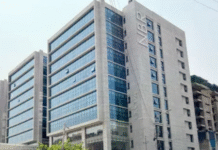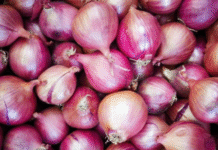Says Irish market research firm


The pharmaceutical market of Bangladesh is expected to surpass $6 billion by 2025 with an absolute growth of 114 per cent from its 2019 levels, according to a report from a Dublin-based market insight and analysis firm, Research and Markets.
“The pharmaceutical market has been witnessing excellent growth in recent years, and it is expected to have a compound annual growth rate of more than 12 per cent during the 2019-2025 period,” said the report titled “Bangladesh Pharmaceutical Market Future Opportunity Outlook 2025”.
According to the report, biotech pioneers of Bangladesh’s pharmaceutical industry are considered as a valuable tool for the overall improvement and efficacy of the market.
A majority of the growth will be contributed by local companies with a market share of more than 90 per cent as similar to past trends attained over the last two decades, the report said.
In recent times, local pharmaceutical companies have emerged as a game-changer by contributing more than 90 per cent of the overall available medicines in the market.
The pharmaceutical industry, a winner of the global market through dynamism and technology, experienced tremendous growth in the last decade and currently contributes 1.83 per cent to the country’s gross domestic product (GDP), according to industry people.
Local pharmaceutical makers still have immense potential in the healthcare sector, as Bangladeshis spend around $2.04 billion abroad annually for medical treatment, which is 1.94 per cent of the country’s GDP, according to a market analysis by the Bangladesh Investment Development Authority (Bida).
The demand for healthcare services is growing at about 21 per cent annually thanks to the increasing purchasing power of the growing middle and upper-middle classes, the Bida said.
The notable change that attracted the world towards Bangladesh is a consequence of innovation in the science and research and development sector, the Research and Markets said in its report.
Rise in life expectancy, growing per capita income, changing disease profile, population growth, lifestyle changes and increasing patient population are some of the key drivers that are boosting consumption in the local market, it said.
In the upcoming years, the government of Bangladesh will play a significant role in the rapid growth of the pharmaceutical market by providing favourable policies for easy drug approval, production and marketing of new products, the Irish firm expects.
The government is focusing on reducing the country’s dependence on the import of raw materials. The establishment of an API Park will act as a turning point for this purpose.
The top 50 companies are setting up their facilities at the Active Pharmaceuticals Ingredient Industrial Park in Munshiganj that will help in the production of patented and already opened active pharmaceuticals ingredients.
It is expected that the development of the API Park will be complete by the next two years, which will reduce the expenditure related to the import of raw materials.
The report said the share of generic drugs is expected to surpass 85 per cent by 2025, which will further strengthen the dominance of local pharmaceutical companies in the market.
“The capacities of local companies are improving, and they are expanding their facilities and investing in research and development, which will help the sector grow,” said SM Shafiuzzaman, secretary-general of the Bangladesh Association of Pharmaceutical Industries (BAPI), a platform of about 250 local drug-markers.
He also said the availability of workforce is also an essential factor for the sector to flourish.
There is no difference in quality between original products and the generic products manufactured in Bangladesh, he said. “Bangladeshi pharmaceutical products have always maintained global standards.”
“The quality and global image of Bangladesh’s medicines are better than the generics produced in India and Egypt,” said Monjurul Alam, Beacon’s director for global business.
“Since our labour cost and utilities are cheaper than in many countries, our products are more affordable compared to other medicine manufacturing nations.”
The general people of Bangladesh can now afford medicines as their purchasing power has increased four times in the last 20 years, he said.
“Moreover, people are well aware of diseases now. Chronic diseases are increasing, which need a regular intake of medicines. All these have triggered the domestic market to boom.”
Moreover, local companies are investing and developing dedicated facilities for specialised drugs for treating diseases such as cancer, he said.
“At least 10 to 15 facilities are producing products of international standards. We are now working on producing APIs. If we can start the API production, we can offer more advanced drugs at a more affordable price.”
The pharmaceutical industry has managed to grow its exports in the current fiscal on the back of steady demand for medicine amid the coronavirus-induced economic and health crises, which have decimated other major export sectors.
“Pharmaceutical products are essential for all countries. That is why the industry’s exports did not decline amid the Covid-19 outbreak. Rather, it rose.”
Pharmaceutical shipments soared 4.49 per cent year-on-year to $136 million in fiscal 2019-20 following improvements in product quality and policy support.
The industry is one of the handful of sectors that ended the fiscal year in the black when national exports fell 16.93 per cent.
The sector fetched $130 million in export earnings in fiscal 2018-19 and $103.46 million in fiscal 2017-18.
“As a least developed country, Bangladesh does not need to follow the patent, making it easy to formulate any generic drug locally,” said Ananta Saha, international business manager of Renata.
He said the population of Bangladesh is large, which is one of the main reasons for the local pharmaceutical industry’s rapid growth.
Regarding the export forecast, he said it would be achievable as it is easy to export pharma products from an LDC to another.
The efficiency of the local companies is improving, and they are expanding their manufacturing facilities, said Muhammad Halimuzzaman, deputy managing director and chief executive officer of Healthcare Pharmaceuticals.
Rabbur Reza, chief operating officer of the company, believes Bangladesh would be able to reach the export target for 2025 if the local sector continues to grow at the current rate.
However, he said Bangladesh has to wait until June next year to find out the pharmaceutical industry’s accurate growth rate, which will indicate whether the industry will be able to reach the $6 billion target by 2025.
The economic growth of the country is helping the sector grow faster, he said.
The rising purchasing power of the people and awareness about the treatment is working as a driving force for the sector, he added.









